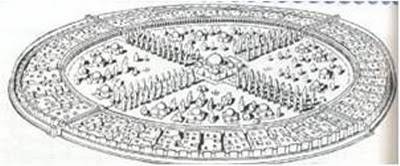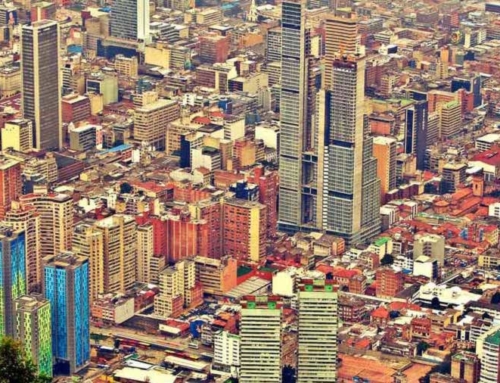The Founding of Baghdad
Abbasid Caliph al-Mansur founded Baghdad on July 20, 762 C.E., intending it to serve as the capital of Islam and calling it “Madinat-us-Salaam,” or City of Peace. Baghdad was also known as the Round City because it was constructed in a circular shape, consisting of towering semi-circle city walls on the right and left banks of the Tigris River. At the center was a large square with the mosque on one end and the caliph palace on the other; along the inside of the city walls were residential and commercial structures.

An artist’s impression of the Round City
Strategic Location of Baghdad
Baghdad was designed in such a way that it was able to utilize the two major river systems in the area: the Tigris and the Euphrates. This strategic and geographic advantage enabled Baghdad to control trading routes and also provided its inhabitants with a plentiful supply of water.
“The Tigris River and a system of canals gave the city access to the sea, and its trade and manufacture brought an enormous accumulation of wealth. Its palaces, mosques, schools, and public buildings were the wonder of the world,” according to F.B. Artz, author of The Mind of the Middle Ages.
Indeed, Baghdad became renowned not only for its size, shape and affluence, but also for its nurturing of the arts, sciences, and education.
Read More
Got Questions?
We have Answers. Get in touch now.








